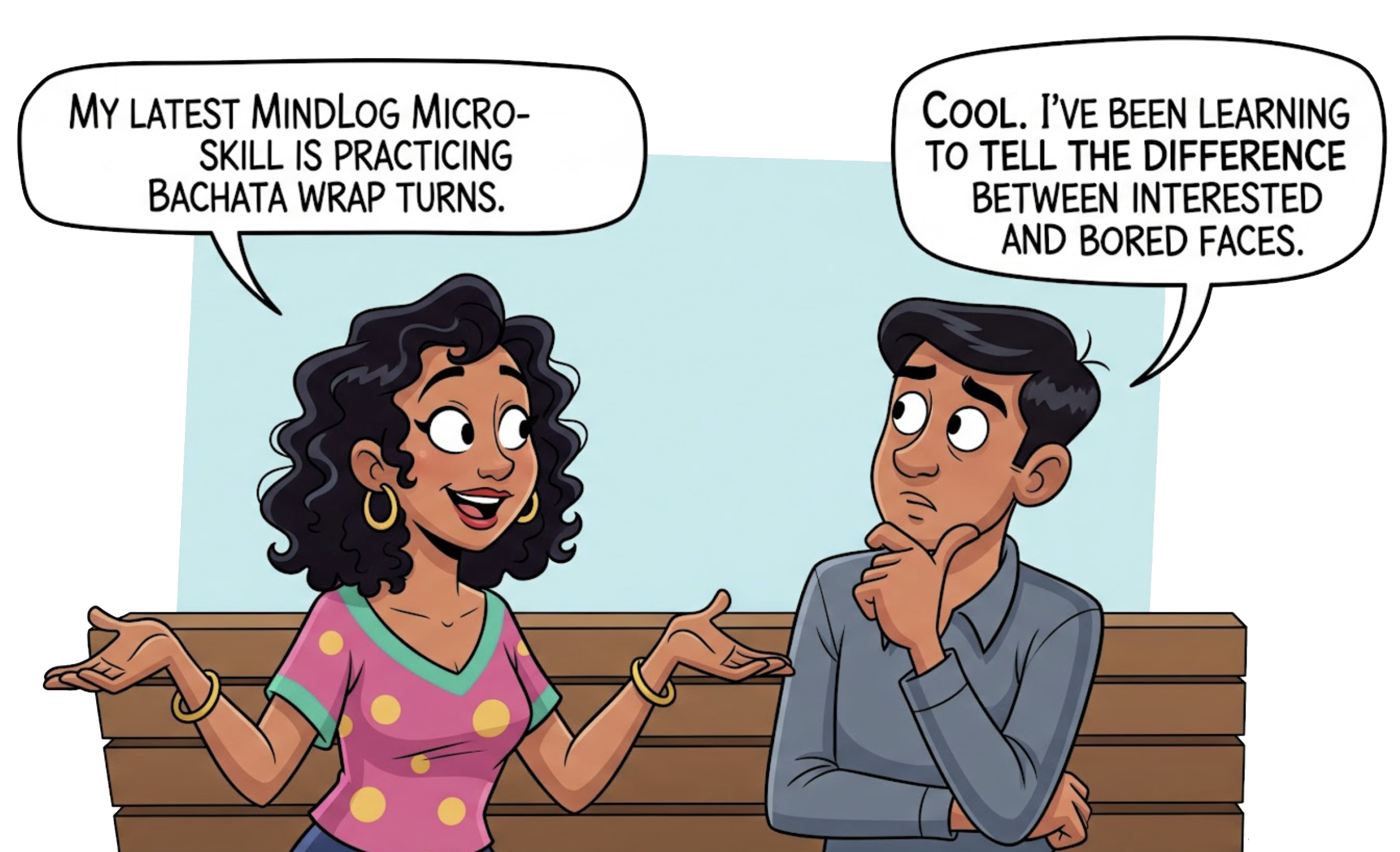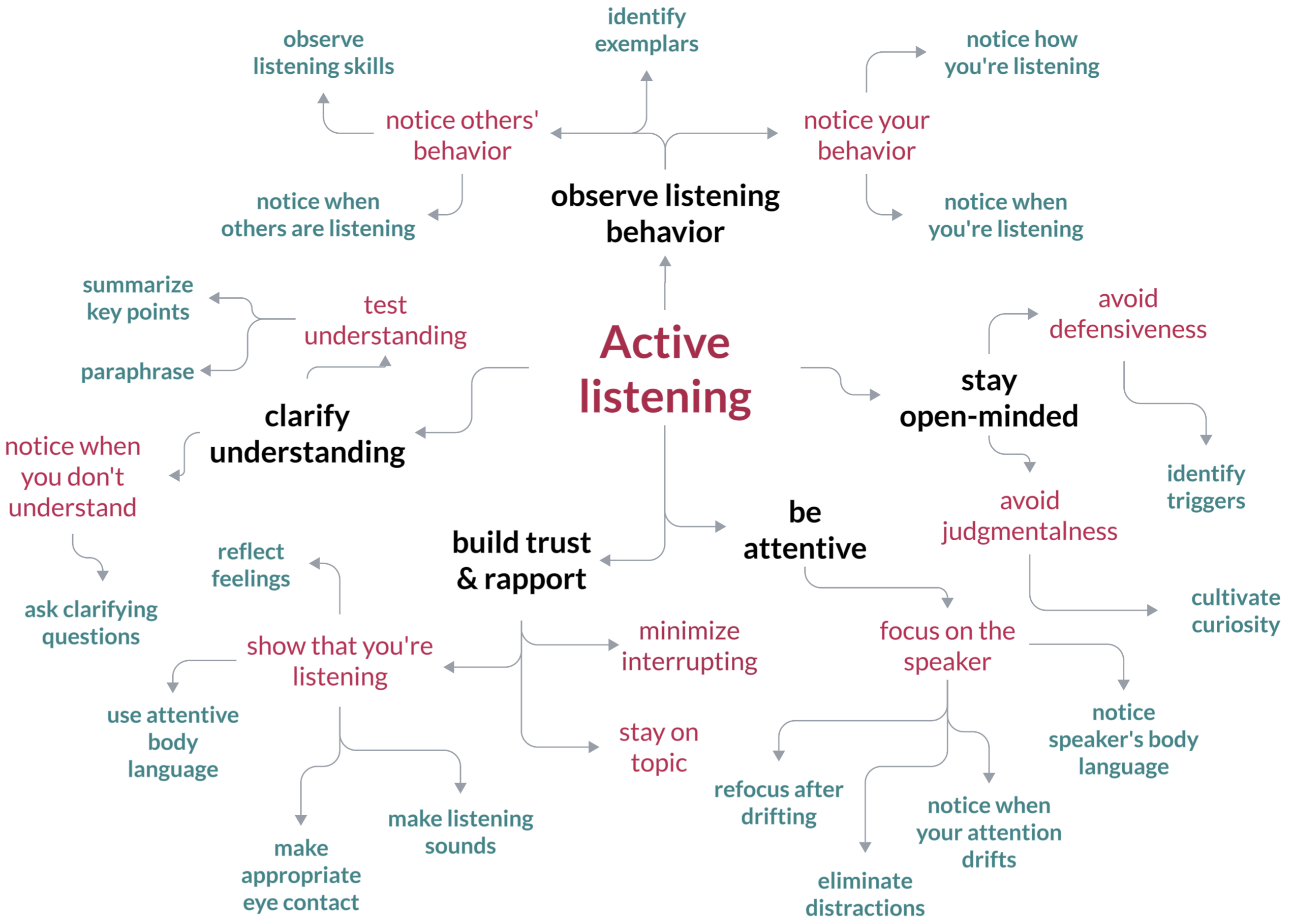The art of setting MindLog micro-tasks
Please Please send us your favorite micro-tasks.
We’ll use them to further develop the information on this page
A good education (or learning practice) supports the development of competent, compassionate, aware, and attentive people who work well with others. The best way to develop these qualities is through embedded practices that foster personal and interpersonal awareness and skill through self-reflective and collaborative learning. Embedded (real-world) practices provide another benefit as well. They tend to excite emotions that are known to enhance learning. The best micro-tasks are practices that build domain knowledge and skills while providing opportunities to engage in practices that require reflection and/or collaboration.

What is a micro-task?
A micro-task is any action that…
- Has reflective and/or collaborative components,
- Can be carried out in a few minutes—or even seconds. (That’s why it’s called micro.)
- Will help build a skill or habit that’s important to the learner, and
- Offers multiple opportunities for practice.
Setting a micro-task
A MindLog Micro-tasks is usually related to…
- An issue you've been writing about,
- Your larger purpose in using MindLog, or
- Feedback from a coach, educator, friend, family member, or colleague.
It's best to set a micro-task right after you have entered a reflection. While your thoughts are fresh in your mind, see if you can identify something interesting you'd like to explore further—something that feels like a bit of a stretch. We call this stretch-point a growth edge, and it's often associated with a sense of anticipation, interest, or excitement.
A growth edge suggests an action.
For example, if a colleague poses an interesting question you’re not quite ready to answer, this could suggest the need to learn something new or figure out how to explain something you haven’t explained before. In this situation, you could set a micro-task to practice responding to the question or plan a chat with friends or colleagues to find out how they might answer the question.
On the other hand, If you’ve written about a communication problem you’re having at work, your growth edge might involve feeling a need for more perspectives on the situation. In this case, you could set a task to check in with a couple of trusted friends to seek their ideas for handling the situation.
Alternatively, if you’re using MindLog as a study tool, you might notice that a particular term is tripping you up. In this situation, you might set a task to try to notice every time someone uses this term—to see if you can get a better understanding of how it’s used in context. This kind of task readily lends itself to micro-VCoLing. (See below for more information about micro-VCoLing.)
A micro-task is micro.
A micro-task should truly be micro. When we set larger tasks we’re less likely to get them done, and even if we manage to complete them, we don't learn as much as we would have if we'd set a simple micro-task, then followed it with a chain of micro-tasks, each building on the other over time.
The skill map shown below shows how larger skills can be broken down into smaller component skills. The skills around the outside of the map are ideal for micro-tasks.

What is a skill?
We talk a lot about skills here at Lectica. From our perspective, skill-building is equivalent to mind-building. Our definition of skill is, “anything that develops through practice.“ This sounds simple, but can get a little complicated. Here’s how we’ve divided up the skill pie:
First order skills
Micro-tasks often involve first-order skills because first-order skills lend themselves to direct practice. Here are some examples:
- Physical skills—walking, running, dancing, etc.
- Social skills—sharing, cooperating, communicating, collaborating, explaining
- Mental skills—thinking, emotion regulation, observing, forming judgments, reflection, and experimenting
- Combo skills—cooking, gardening, acting, teaching, experimenting
- Habits—habits are first-order skills in the sense that they can be developed or modified through direct practice.
Second-order skills
These emerge from practice in a less direct way. For example…
- Meanings develop as a consequence of repeated engagements with words and ideas through interactions with the social and physical world.
- Expertise develops as a consequence of long-term practice of a set of skills in a variety of contexts.
- Creativity & intuition, as we define them, develop as a consequence of practicing a diversity of skills in a variety of contexts.
Second order skills are too big for direct practice, so they don't work well as micro-tasks. Fortunately, they can be broken down into smaller constituent skills that do lend themselves to direct practice..
Non-skills
Some things people refer to as skills aren’t really skills. These include things like:
- Heritable traits—empathic/sociopathic, introversion/extroversion, intensity, intelligence
- Characteristics—self-confident, motivated, resolved, judgmental, anxious, domineering, courageous.
Traits and characteristics do not lend themselves to practice, although the way they show up in behavior can be influenced by life experience or the practice of self-regulation skills.
How to tell a skill from a heritable trait or characteristic
This is easy. Try adding the name of a trait a or so-called skill to the following sentence: “I’m going to practice X.” If it isn’t immediately clear how X might be practiced, it’s probably not a skill. For example:
- I’m going to practice listening. (Listening is a skill.)
- I’m going to practice motivation. (Motivation is not a skill.)
Micro-tasks & micro-VCoLs
VCoLing is an effective way to practice micro-tasks. VCoLs are tiny, in-the-moment learning cycles that leverage the brain’s inborn motivational system to foster more robust mental development.
Dr. Dawson has written quite a bit about micro-VCoLing, and the Lectica Institute offers a course (ViP) that helps participants build micro-VCoLing skills—skills for optimal self-directed learning.
We’ve even created a free Micro-VCoL Maker™, which makes it easy to build basic micro-VCoLing skills.
Here are some helpful articles about micro-VCoLing:
- VCoL in action: How to use micro-VCoLs to learn optimally on the fly
- Everyone should have the opportunity to develop optimally
- VCoL in action: The many benefits of micro-VCoLing
- VCoL in action: The active observer